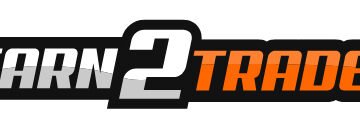Introduction
In the fast-paced world of financial markets, proprietary trading (prop trading) has gained immense popularity as an avenue for individuals to leverage their trading skills and strategies. This article explores the basics of prop trading, its mechanisms, and the benefits it offers compared to using your own capital for trading. We’ll also touch upon how discount codes can enhance your journey into the world of prop trading.
What is Proprietary Trading?
Proprietary trading, often referred to as “prop trading,” is a unique approach to financial markets where individuals, often associated with proprietary trading firms, trade the firm’s capital instead of their own. These firms allocate capital to traders who demonstrate their proficiency in trading various financial instruments, including stocks, commodities, currencies, and more.
How Prop Trading Works
- Training and Evaluation: Proprietary trading firms typically require traders to undergo training and evaluation to ensure they have the necessary skills and discipline. Many firms provide extensive educational resources and mentorship programs.
- Access to Capital: Once a trader is approved, they gain access to the firm’s capital, allowing them to initiate trades with significantly larger positions than they could with their personal funds.
- Risk Management: Proprietary trading firms implement robust risk management systems to protect their capital. Traders are often required to adhere to strict risk parameters and trading guidelines.
- Profit Sharing: Profits generated from trading are typically split between the trader and the firm, with traders receiving a portion of the gains as compensation for their performance.
Benefits of Proprietary Trading
- Leverage: One of the primary advantages of prop trading is the ability to leverage the firm’s capital, amplifying profit potential while mitigating individual risk.
- Access to Resources: Prop traders often have access to cutting-edge trading technology, research, and market analysis tools that can enhance their trading strategies.
- Risk Diversification: Trading with a firm’s capital allows traders to diversify their positions, reducing their exposure to individual asset risks.
- Income Potential: Successful prop traders can earn a substantial income, as their compensation is linked to their trading performance.
- Professional Development: Prop trading firms offer valuable training and mentorship, allowing traders to continually develop their skills and expertise.
Why Use Discount Codes for Prop Trading Firms?
As you venture into the world of prop trading, finding ways to optimize your trading experience is crucial. Discount codes can be a valuable asset in this regard. Here’s how they can help:
- Cost Savings: Discount codes can provide cost savings on trading fees, software subscriptions, and educational resources. This allows traders to keep more of their profits.
- Enhanced Resources: Some discount codes may provide access to premium research and analysis tools, giving traders a competitive edge in the market.
- Improved Trading Environment: Discounts on trading-related services can lead to a more favorable trading environment, ultimately contributing to better performance.
- Competitive Advantage: Accessing exclusive discounts can give you an advantage over other traders, helping you achieve greater success in the prop trading world.
Conclusion
Proprietary trading offers a compelling alternative to trading with your own capital, providing access to greater resources, leverage, and income potential. When seeking ways to enhance your prop trading journey, don’t hesitate to search for discount codes first. They can help you save money, access valuable resources cheaper, and make it easy to position yourself for success in the dynamic world of proprietary trading. So, as you explore prop trading opportunities, keep an eye out for discounts that can amplify your trading experience and propel you towards financial success.
Below is FAQ for Apex Funded Trader :
Knowledge base
- Welcome To Apex Trader Funding <– Click HEADER to see entire section
- Master Training Courses- Required Before Trading
- Everything About Rithmic / rTrader <– Click HEADER for more
- Tradovate <– Click HEADER to see entire section
- Can Canadians trade with APEX?
- Order Flow + , VWAP, TPO, Cumulative Delta on Tradovate
- Tradovate Web / Mobile Platform Limitations
- Level 2 Data and other add on Subscriptions for Tradovate
- How to setup NinjaTrader 8.1. + with Tradovate accounts
- What platforms can I use to trade with a Tradovate account
- Evaluation Accounts <– Click HEADER to see entire section
- MASTER TRAINING COURSE-EVALUATION ACCOUNTS- REQUIRED Before Trading
- ERROR: Only Admins Can Place Trades- what does this mean?
- Why would I want to trade multiple evaluation accounts? Master Course
- What is the difference between Static and Full
- Code of Conduct
- How Does The Trailing Threshold Work? Master Course
- Performance Accounts <– Click HEADER to see entire section
- Platform Connection Links / Guides <– Click HEADER to see entire section
- Billing Questions <– Click HEADER to see entire section
- APEX 2.0 – Cyber Monday Updates To Rules and Payout Structure
- Misc-Other-Help-Tips-Tricks <– Click HEADER to see entire section






